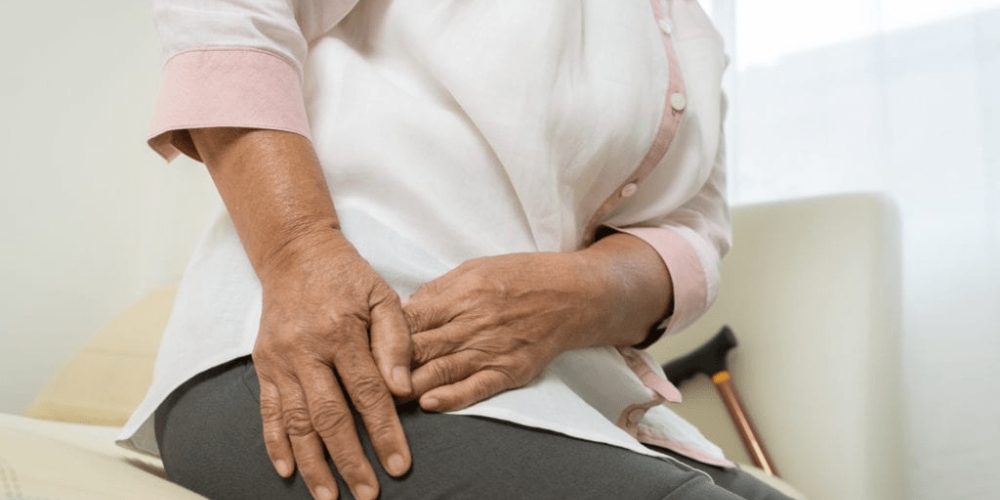Female lower back pain is often caused by muscle strain, PMS, endometriosis, and painful periods. Treatments include rest, medicines, and surgery. All ages and sexes experience back pain. What causes lower back pain in females? Lower back pain can be caused by injury, overuse, arthritis, and degenerative disk disease. Menstruators, pregnant women, and endometriosis sufferers may experience lower back pain. Gender-related anatomy can also cause lower back pain. The pelvis of a female born is wider than that of a male, which affects lumbar spine alignment and stress distribution.
Women-Specific Low Back Pain Causes
Some low back pain causes are female-specific. The following conditions can cause lower back pain:
PMS
Premenstrual syndrome (PMS) is a common condition among women before their periods. It has many symptoms, but you may not have them all. Following are the general symptoms:
- Lower back pain
- Headache
- Fatigue
- Bloating
Emotional and behavioral symptoms include:
- Mood swings
- Food cravings
- Stress and difficulty focusing
PMS usually begins a few days before and ends a day or two after your period.
PMDD
PMDD is a severe form of PMS that disrupts daily life. PMDD symptoms can impair functioning. PMDD affects fewer women than PMS. PMDD has similar emotional, behavioral, and physical symptoms to PMS. However, all symptoms may worsen. Most symptoms begin a week before and end a few days after your period. A family history of depression, mood disorders, or PMDD may increase your risk of PMDD.
Endometriosis
Endometriosis occurs when endometrial tissue grows outside the uterus. Endometriosis causes this tissue to grow on the ovaries, fallopian tubes, and pelvic lining. It may grow around the bowel and urinary tract.
The most common endometriosis symptom is pain. Other symptoms:
- Severe menstrual cramps
- Low back and pelvic pain during or after sex.
- Period pain with bowel movements or urination
- Between periods, endometriosis can cause bleeding or spotting. You may also experience bloating and diarrhea, especially during your period. Endometriosis may hinder pregnancy.
Pregnancy
Back pain is common during pregnancy. As your center of gravity shifts, you gain weight, and hormones relax ligaments for birth, it happens. Most pregnant women experience back pain between the fifth and seventh months, but it can start earlier. Lower back problems increase the risk of back pain during pregnancy. The most common pain areas are below the waist and across the tailbone. Your waistline and center back may also hurt. Pain may spread to your legs.
Ovarian Cysts
Ovarian cysts are fluid-filled sacs. Small ovarian cysts may not cause symptoms, so some people are unaware. Lower back and pelvic pain can result from larger cysts. Most benign ovarian cysts in reproductive-aged women don’t affect daily life, so surgery isn’t needed. Ovarian cysts can rupture, cause pain, blood loss, and twist. These complications may require ovarian cyst removal surgery.
Adenomyosis
Endometriosis resembles adenomyosis. Endometriosis grows extra tissue outside the womb, while adenomyosis grows it into womb muscle. Similar to endometriosis, symptoms include lower back, pelvic, menstrual, and heavy periods. Pain is managed with hormone therapies and medication. Hysterectomy may be needed for severe symptoms.
Fibroids
Womb-lining fibroids are muscular growths. Also called uterine myomas or leiomyomas. Most fibroids are noncancerous and can range in size from a pea to a melon. Lower back and pelvic pain, heavy menstruation, and frequent urination are symptoms. Treatments provided by pain management in Dallas include painkillers, hormonal therapies, and fibroids removal surgery. Hysterectomies are used in three-quarters of fibroid treatments.
Other Causes of Lower Back Pain
Many causes of back pain affect both men and women. You may feel lower back pain when standing or sitting, depending on the cause. What causes lower back pain in females? Some of the most common non-gender-specific lower back pain causes are listed here. This includes:
- Herniated discs—the ‘cushioning’ tissue between your vertebrae moves out of place. This can cause pain and mobility issues.
- Your spinal canal can narrow over time, causing spinal stenosis. This can compress nerves, causing pain.
- Sciatica—Back nerve irritation causes pain. It can cause lower back, buttock, leg, and referred groin pain, weakness, and altered sensation. Bilateral sciatica is rarer than unilateral sciatica.
- Your lower back or hip muscles can put extra pressure on your lower back when they’re not working properly.
- Scoliosis—a common spine curvature—can cause lower back pain. Because symptoms are mild, many people have it without knowing it. Occasionally, severe symptoms require surgery.
- Spinal ligament sprains occur when you overstretch or tear ligaments. Ligament sprains cause lower back pain and inflammation.
Lower Back Pain Symptoms
Lower back pain symptoms vary. Lower back pain can occur suddenly or gradually.
- Follow an event, like bending over to pick something up. It may “pop” when it happens.
- Sharp or dull ache that comes and goes or persists.
- Pain that radiates to your buttocks or rear legs.
- Bending over or crouching down hurts, and lying down helps.
- Standing up from a seated position may take time, and you may need to stretch or walk to relax. Range of motion may decrease.
- Problems with posture: Many people with back pain have trouble standing. Your torso may be “crooked” or bent, off-center from your spine. Flattening your lower back may occur.
- Lower back muscle spasms: Strains can cause uncontrollable muscle contractions. Spasms can be excruciating and prevent standing, walking, or moving.
Conclusion
Consult a pain doctor in Dallas if severe pain and/or lower back pain prevent daily activities. A variety of factors can cause lower back pain in women. What causes lower back pain in females? Menstrual pain, endometriosis, pelvic inflammatory disease, fibroids, pregnancy-related back pain, ovarian cysts, and adenomyosis are female-specific causes of lower back pain. Rest, heat or cold therapy, OTC painkillers, stretching, and posture improvement may help temporarily. Prolonged or severe pain requires medical attention.



